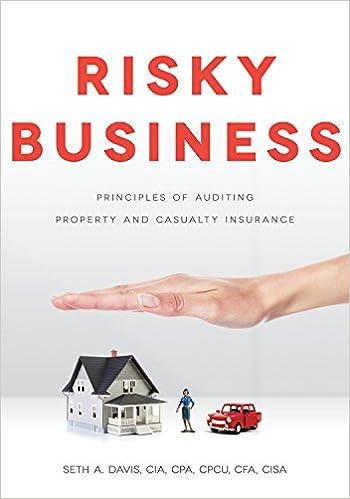Question
Instrument 3 Auction-Rate Security During 20X1, FFC acquired ARSs, whose underlying assets are student loans that have a term of 20 years, with the interest
Instrument 3 Auction-Rate Security
During 20X1, FFC acquired ARSs, whose underlying assets are student loans that have a term of 20 years, with the interest rate reset on the basis of Dutch auctions3 that generally occur every 28 days. The ARSs were initially marketed to FFC as cash equivalents because the rate-setting mechanism of ARSs is designed primarily to provide liquidity and economic characteristics similar to those of short-term investments. Although ARSs are designed to exhibit behavior similar to that of short-term investments, when demand for ARSs decreases and there is insufficient interest in the Dutch auction, a failed auction occurs and investors are unable to liquidate their positions through the auction process.
During Q4 20X2, demand for ARSs (with student loans as underlying assets) significantly decreased as investor confidence in these investment products and the performance of the underlying loans diminished. The lack of demand resulted in numerous auction failures and a limited secondary market for these securities. As a result of the failed auctions in Q4, FFC received the maximum interest rate on its ARSs. (The maximum interest rate is predefined in the ARS agreement and is higher than the rate FFC would have otherwise received if sufficient demand for the ARSs existed during the auctions.) FFC expects that the failed auctions may persist and the companys investment in ARSs will continue to pay the maximum interest rate. The auctions continue to be conducted as scheduled.
In prior periods, FFC used a market approach that was based on observable market transactions to fair value its ARS holdings, which had resulted in a fair value approximating the securities par value. However, because of the continued deterioration in liquidity for the segment of the ARS market backed by student loans, FFC did not observe any market transactions during Q4 20X2. As a result, as of December 31, 20X2, FFC used a discounted cash flow model (i.e., an income approach) to value its ARS holdings. FFC believes that the discounted cash flow model is a widely accepted method for measuring the fair value of ARS investments in the current environment. Certain inputs to the valuation model that are significant to the overall valuation are not market based, including estimates of future coupon rates if auction failures continue, prepayment speed assumptions, credit risk assumptions (including performance of underlying collateral), and illiquidity discounts.
What level of the Fair Value Hierarchy is this instrument in?
Step by Step Solution
There are 3 Steps involved in it
Step: 1

Get Instant Access to Expert-Tailored Solutions
See step-by-step solutions with expert insights and AI powered tools for academic success
Step: 2

Step: 3

Ace Your Homework with AI
Get the answers you need in no time with our AI-driven, step-by-step assistance
Get Started


